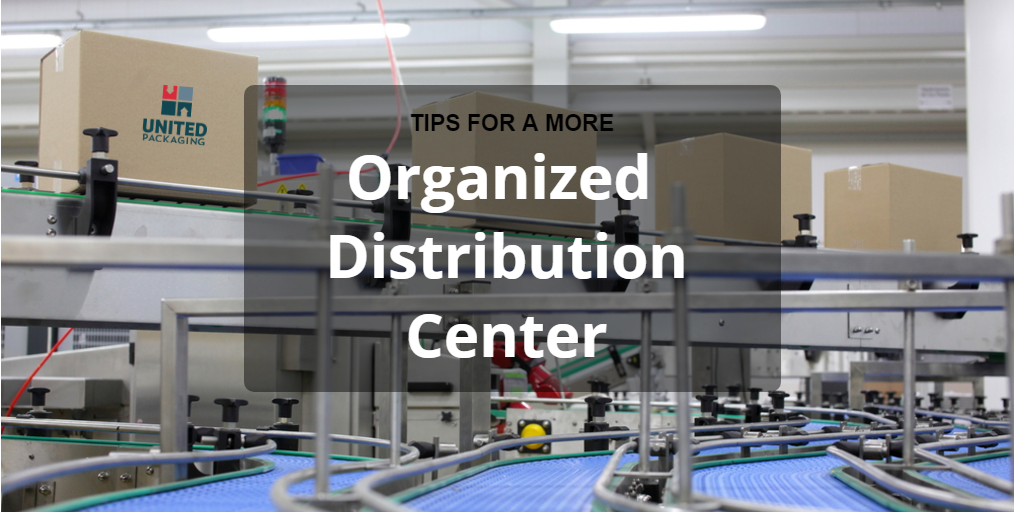What’s the secret for a well-run business? There are many keys to success depending on who you talk to. Some say a messy desk is good for creativity. Some say disorganization is the enemy. We think that it all depends on your business, company, and industry.
It is safe to say, however, that organization is paramount in the distribution business. When working with a distribution, ideally, it should be an organized business. Can you imagine working with a company whose warehouses and silos were a literal mess, with little to no data organization, and everyone working was on different schedules? You could expect delays, major lapses in communication, big headaches, and in the end, a damaged reputation. By the time the company gets is right, it’s too late. And at what cost?
Organized distribution = organized businesses.
Think of Amazon as one of the most organized distribution divisions in the world. This is not hyperbole. How else can they ship same or next day around the world with very small margin of error? Amazon may be an exceptionally run business, but they are also a benchmark for how other distribution centers run. If a company with such large demand can deliver, we all can.
We can’t always control how other businesses run, but we can advance the way we run our own distributions. Businesses go through a lot of learning experiences, and in 25 years, these are some of the most valuable tips we’ve found when it comes to warehouse and distribution organization.
1. Take time to train your distribution team
In efforts to save time, businesses may skimp on training, which leads to poor performance and maintenance inside a distribution center. This part of the business runs at the core of the company. If you are looking to save time, don’t take time away from training. Properly train employees, and you’ll find your business saving time automatically. Failing to properly train employees can also lead to mistakes, injuries, and low employee morale, all of which will cause rework and lost time down the road.
2. Use the right data programs / software for your business
There is not a one-size-fits-all program for all DCs. Data programs are just as abundant and different as your business is unique. Do the research. Whether by internet, publications, or word of mouth from similar, respected companies, find the software that works best for your internal systems. Get your team on board, get them trained, and the organized distribution will eventually follow.
3. Embrace new technologies
Don’t be afraid of embracing new technologies to stay ahead of the curve. New technologies can help your organization communicate more effectively, reduce instances of lost or misplaced paperwork, and gain insights into your processes that you never had before. It can also aid in reducing human error when it comes to things like remembering order details, where things go, inventory counts, etc.
4. Adopt “lean” inventory practices
This means that inventory includes only what is necessary, and not stocking an over-abundance of product. With the exception of stocking programs for specific customers, try to keep your distribution center as lean as possible to stay organized. Learn how to use your vendors to your advantage, and schedule regular, frequent deliveries to ensure a steady flow of product while keeping your inventory turns high. Set safety stock levels based on lead times to avoid excessively stocking product that you can have replenished quickly anyway.
5. Keep warehouse clean
There are many reasons why a clean warehouse is good for organized distribution. First and foremost, you can work more efficiently with stocking, receiving and distribution if you can easily see and access your products. Secondly, a messy warehouse is never a good look when your clients, partners, vendors, or boss comes in. It shows people that your business is disorganized, literally and figuratively. Last, and not least, is safety. Avoid injury by employees and visitors alike by keeping a tidy distribution center. Drive home the importance of a clean warehouse to convey pride in your facility and process, which will translate to your employees working with the same pride.
6. Implement cycle counts
Be in the know about what you have on premises. This is helpful for everyone that you work with, including (and most importantly) clients. Your updated system will let both your distribution and sales divisions have transparency into product, which is ideal for selling and shipping alike. Regular cycle counts based on an ABC inventory analysis will allow you to monitor any variations in your counts and possible trends to address problems right away. This will allow you to take corrective action, rather than just guessing the cause months later.
7. Always be reorganizing
Over time, organization will naturally lean towards disorganization. Don’t get sentimental when moving on from old or outdated processes. It’s kind of like staying up to date with what’s new; there will always be innovations for distribution centers and it’s the job of the company to keep up. Keep what’s working well, and research what could help your team and your business. As time goes on, your products, clients, processes, and employees are constantly changing. What worked before may not work now, so constantly studying and adapting your organization is key to continuous improvement.
Can you add to this list? We want to hear from you. Let us know how your company keeps its DC or warehouse organized.
